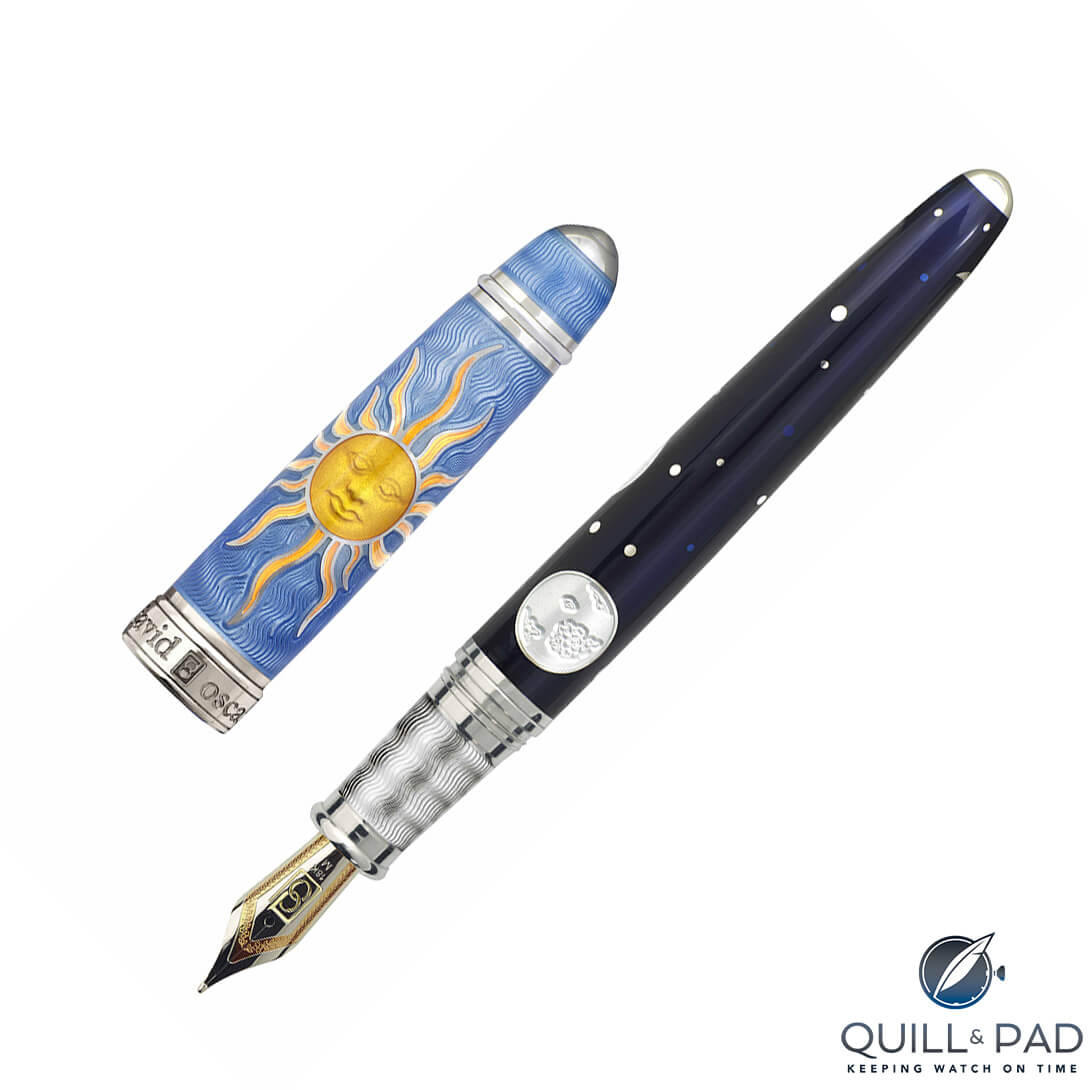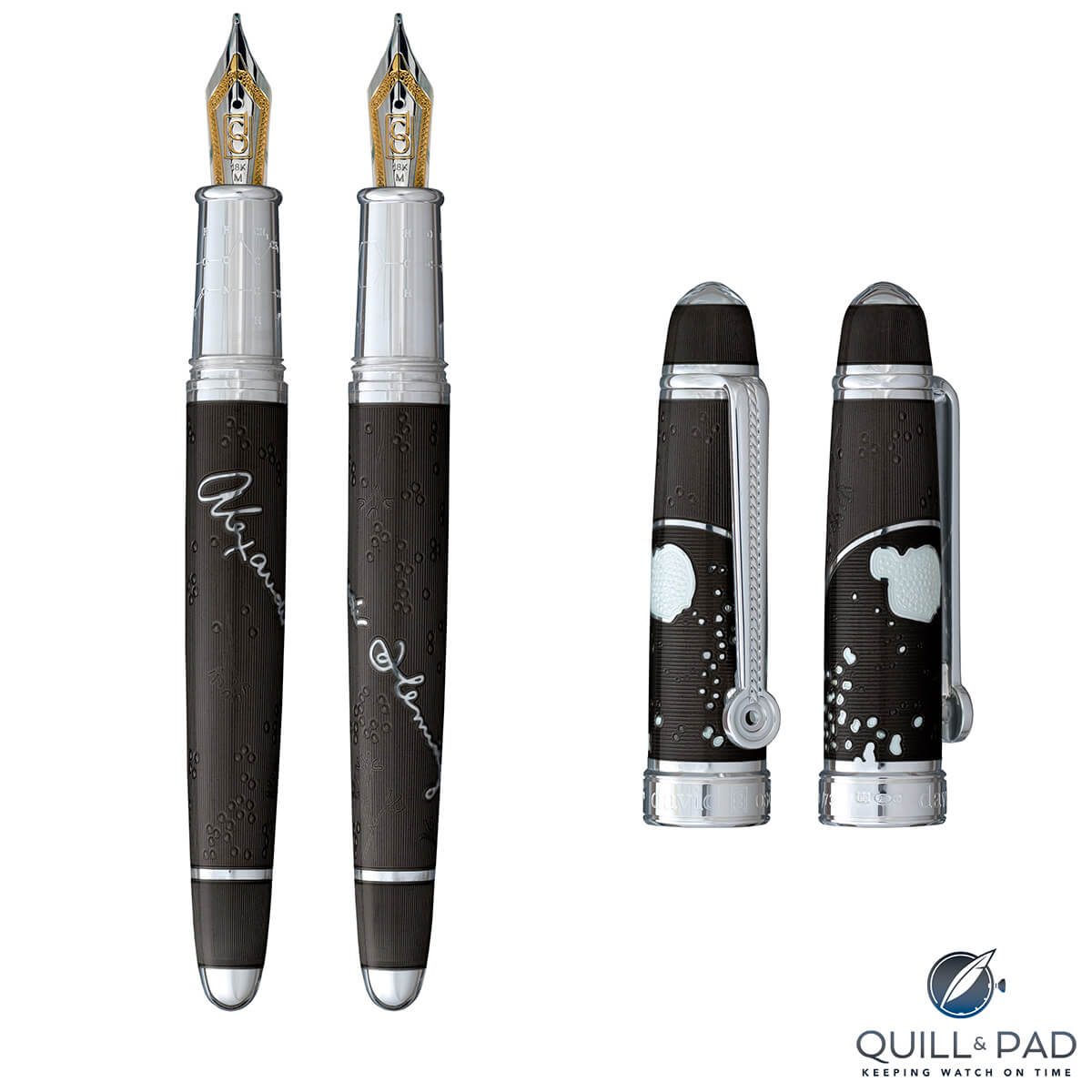by Nancy Olson
David Oscarson has been creating luxury fountain pens since 2000 when he launched his eponymous brand with the limited edition Henrik Wigstrom Trophy pen collection. Since then, he has created 23 limited edition pen collections – three of which have been the recipients of the Robb Report’s annual Best of the Best award – each one a personal tribute to the art of writing.
“The biggest challenge today is helping people remember what a signature means: that it is an extension of one’s self,” says Oscarson. “Much is electronic today, including communication, but I always prefer talking on the phone to texting, and visiting in person to the telephone – old-fashioned, maybe, but much richer, and in my mind, much more rewarding.”
He takes this same mindful approach to the production of his pens. The use of hand-rendered guilloche and enamel, traditional art forms also seen in watchmaking, are emblematic of the brand, and Oscarson takes great care in keeping their quality pure. For example, he makes it eminently clear that the metal parts of his pens are guilloche, as opposed to stamped, since the resulting pattern reflects light in just the right way. Similarly, Oscarson uses exclusive enameling techniques to enrobe his pens as opposed to more cost-effective methods whose results do not meet his standards.
“It is a painstaking multi-step process requiring hours of grinding, applying, firing, filing, and polishing to achieve the layer of kiln-fired glass that covers the engraved body of the pen,” explains Oscarson. “We use no epoxies, resins, or other so-called ‘soft enamels’ in this process.”
One of my favorites among Oscarson’s pen collections, which are now distributed worldwide, is the Celestial. This is in part because I enjoy the “heavenly” motif, but also because I realize the amount of work it takes to create each pen. The sun and sunburst designs featured on the Celestial cap, for example, require multiple levels of engraving to achieve the three-dimensional appearance. The four phases of the moon on the barrel are outlined in high relief while the stars are represented in various widths and depths.
I also think the Black Water Dragon, Oscarson’s eighteenth collection, is pretty spectacular. It, too, employs multiple levels of guilloche and a combination of translucent and opaque hard enamel to achieve its dramatic appearance. The sculpted dragon, the sensational centerpiece of the cap, is crafted in gold vermeil.
Late last year, in anticipation of the company’s fifteenth anniversary in 2015, the American Art Deco collection was launched. It is a retrospective piece, incorporating various guilloche patterns from pens that preceded it. The most recent introduction – his twenty-third – is a bit closer to home for me. The Alexander Fleming series is inspired by Oscarson’s fans in Houston, many of whom are in the medical profession given the city’s world-renowned Texas Medical Center.
“Many of our followers in Houston are doctors or involved with hospitals or the medical field, so I have for some time wanted to create something that they would really appreciate,” he says, adding that those “followers” have also become friends. “And, rather than make a ‘doctors’ pen,’ I thought we should pay tribute to someone who did something really great.”
Sir Alexander Fleming was a Scottish bacteriologist best known for his discovery of penicillin in the early twentieth century. A rendition of his signature stands in high relief around the pen’s barrel in tribute to the countless prescriptions that have been written – not only by Fleming, but by millions of doctors all over the world. Other medical motifs include a Petri dish, an inoculating loop, and even the chemical formula for penicillin in case you ever need it.
“The challenge with this piece was in the enameling process,” explains Oscarson. “Dozens of early pieces were enameled, but each time, the silver would cool faster than the glass, and it would also twist and tweak just enough to shatter the enamel in the process. This isn’t the first time we have encountered this problem, but it has certainly taken the longest to remedy.”
Not one to give up easily, he and his artisans found a solution. “We adjusted angles and depths of engraving until we found a combination that held the enamel on the silver.” And this tenacity and love of the art form is the true heart of the brand, I believe.
“My favorite part of the pen business,” he shares, “is seeing an idea or concept become a real, ‘living’ thing.”
For more information, please visit www.davidoscarson.com.
Quick Facts Alexander Fleming
Editions: fountain pen and rollerball in four color variations
Barrel: translucent gray, blue, orange or black enamel combined with white hard enamel and Sterling silver
Nib: 18-karat gold
Limitation: 73 pieces of each variation
Price: $5,600 (fountain pen); $5,400 (rollerball)
Leave a Reply
Want to join the discussion?Feel free to contribute!




























































I do not agree. – Lolita